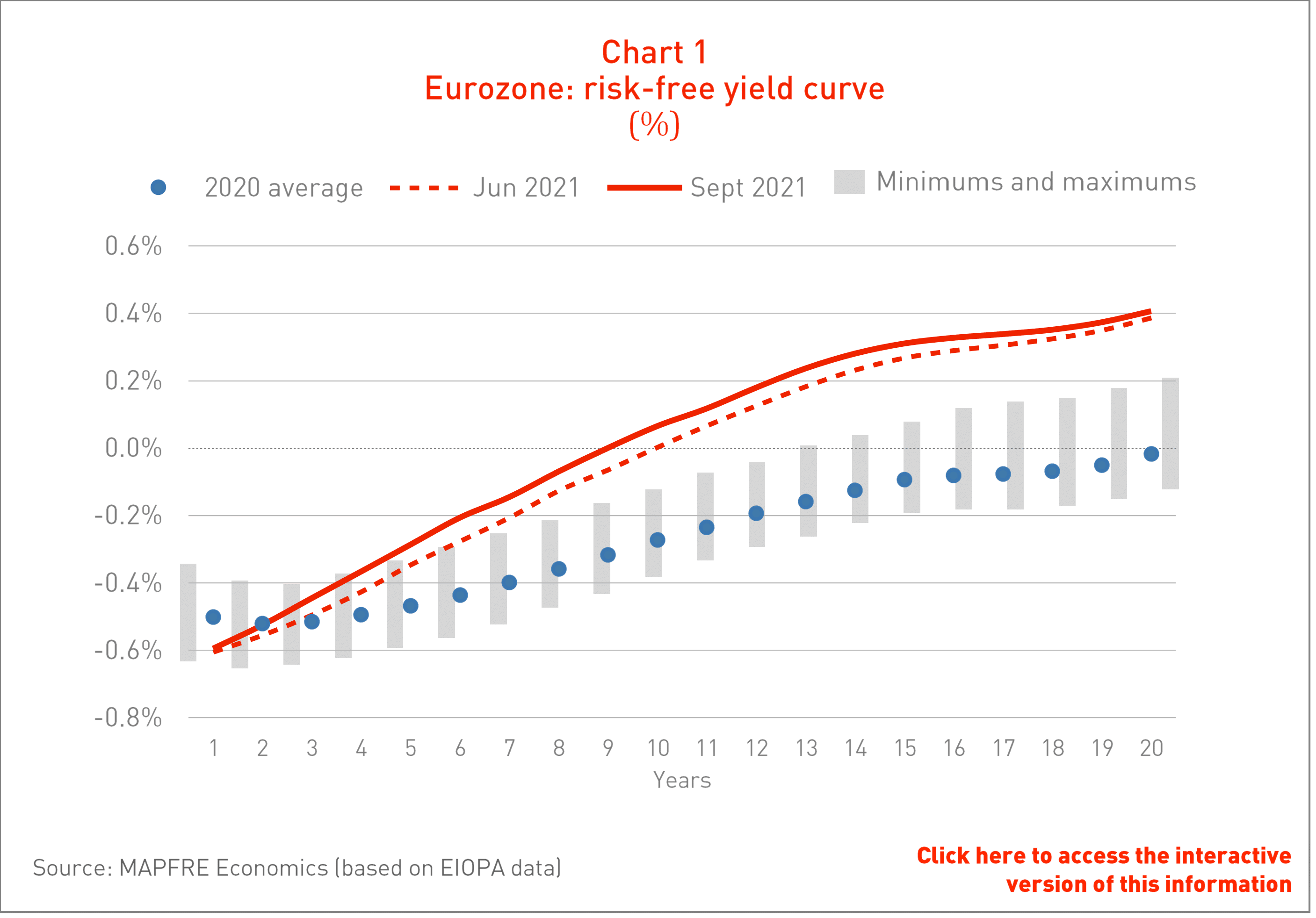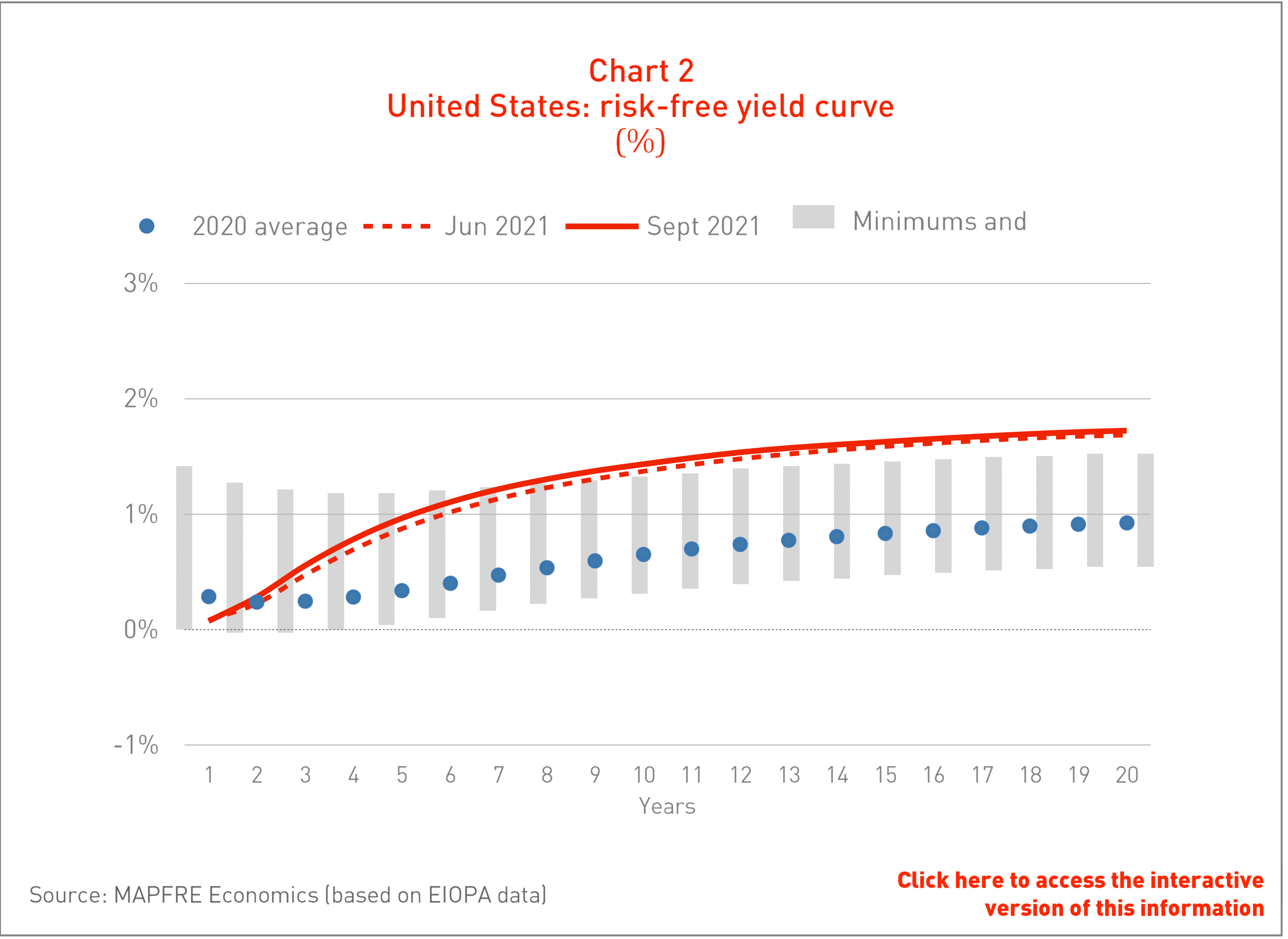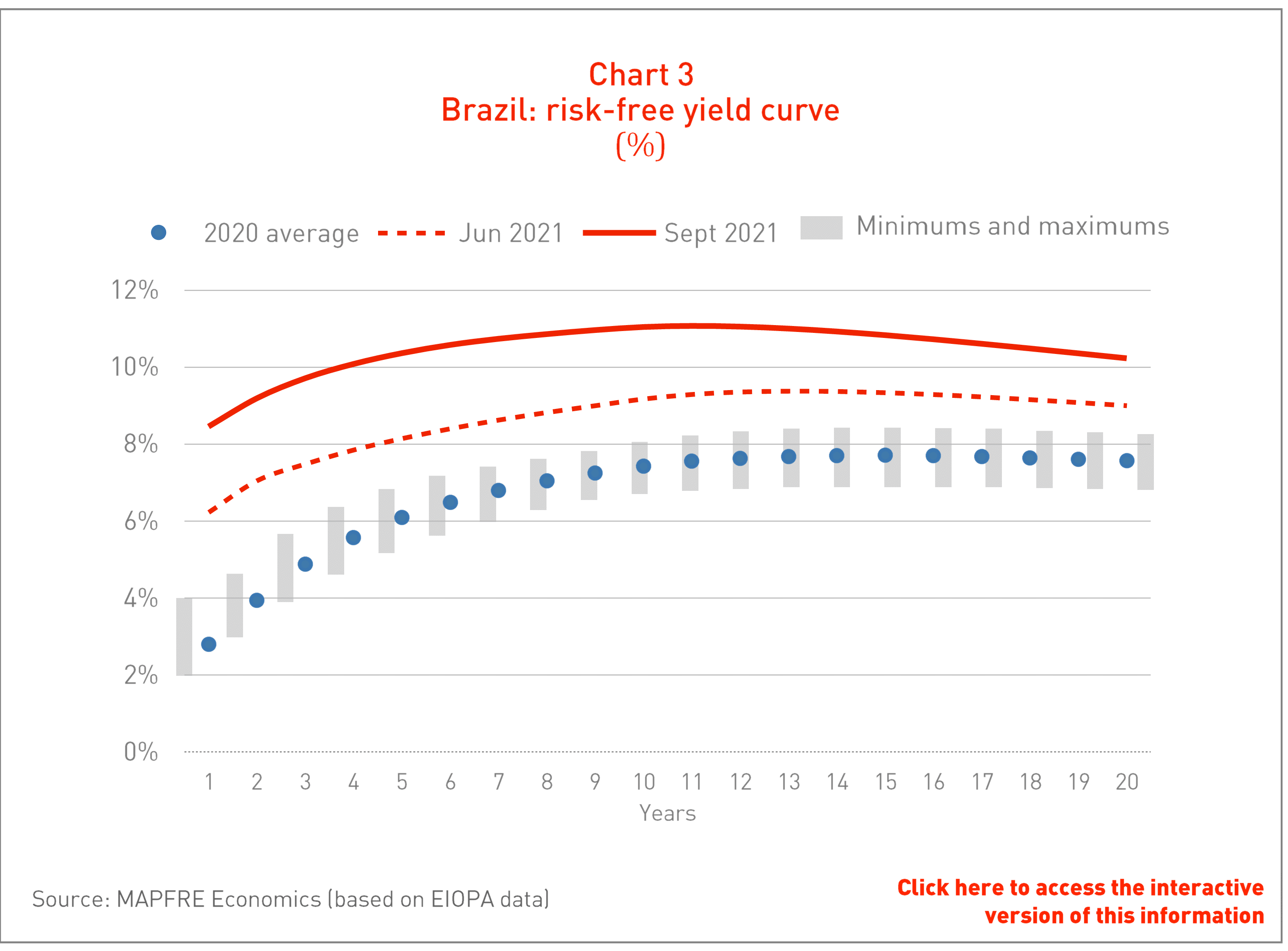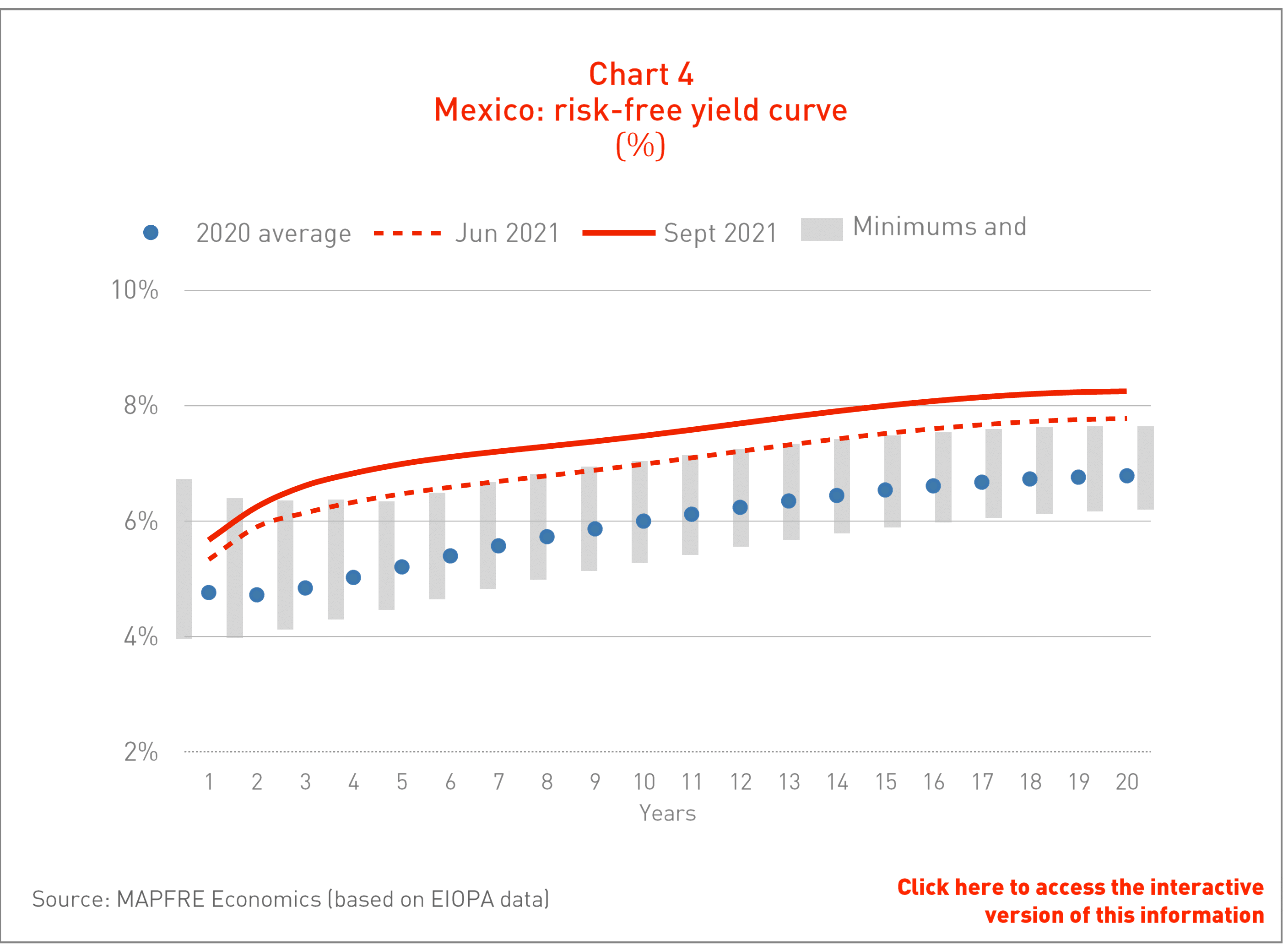Industry outlook for the insurance market (4Q-2021)
Now that the extreme uncertainty generated by economic operators’ movement towards cash positions during the acute phases of the pandemic has been overcome, the life insurance business is being favored by households and companies’ increased appetite for protection against the risk of death. It is also being boosted by financial products that allow them to hedge against inflation and obtain a return on their savings, which encourages the development of life insurance products in which the policyholder assumes the investment risk. The strong performance of the major equity market indexes worldwide is contributing to their development.
At the same time, some emerging countries have already had to withdraw some of the economic support measures they had implemented. In some cases, there has even been a shift towards a restrictive monetary policy, with sharp rises in interest rates to counter inflation that has proven to be more persistent than expected while also substantially exceeding inflation targets, such as in Brazil and Mexico (see Charts 3 and 4). These rate increases are generating a more favorable environment for development of the Life line of business, for savings products and traditional lifetime annuities. In this sense, the Life insurance markets in Brazil and Mexico are experiencing significant growth in business volume, which is also influenced by stronger demand for protection against the risk of death and illness as a result of the pandemic.
In Spain, the insurance industry continues to show significant growth, for both Life and Non-life products. However, for life insurance, the basic effects of the pandemic are quite notable, with pre-crisis figures still seeming a long way off. Equities are beginning to be seen as an alternative form of protection against an environment of low interest rates and rising inflation, and this is encouraging development of life insurance products where the policyholder assumes the investment risk. Products of this type are gaining importance, with a wide range of offerings now being launched onto the market. For the Non-life segment, the pre-crisis levels were never lost, and it is now showing significant year-on-year growth as economic recovery continues (except for some specific lines of business).
Full analysis of the economic and industry perspectives with additional information and interactive charts on the Eurozone, Germany, Italy, Spain, the United Kingdom, the United States, Brazil, Mexico, Argentina, Turkey, Japan, China and the Philippines can be found in the report entitled 2021 Economic and industry outlook: fourth quarter perspectives, compiled by MAPFRE Economics and available at the following link:








